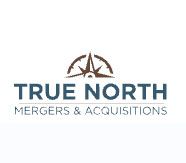Why Most Internal Business Transfers Fail — And How to Get It Right

True North Mergers & Acquisitions
April 28, 2025

For many business owners, transferring a business to a family member or employee can be the ideal outcome of retirement. As seen in the 2023 State of Owner Readiness Report from the Exit Planning Institute, 57 percent of business owners surveyed preferred an internal exit. Yet, according to the Family Firm Institute, only 30 percent of companies successfully transfer into the second generation and 12 percent into the third generation. Why the gap?
While the process may seem straightforward enough for a business owner to navigate on their own, it is filled with landmines. From discovering that the working capital liability of a business may be more than anticipated to waiting 18 months to find out an internal prospect, in fact, can’t purchase the company, these unsuspected landmines can threaten the value of the business.
This blog dives into a business owner’s steps to achieve their goals while pursuing an internal exit.
Four Easy Steps For a Successful Internal Exit
Below is a breakdown of 4 steps business owners should consider when looking to sell their company internally:
Step 1: Determine The Value of Your Business
Determining the value of the business lays the foundation for a transition and should be every business owner’s first step. Even if the business is going to be gifted or partially gifted, determining the value is important for communicating what is being gifted or purchased. This foundation helps avoid resentment down the road from either side.
For example, if the seller feels the business is being undervalued or has adopted unrealistic expectations, they can feel taken advantage of; if the buyer feels the business is overvalued, that can foster unnecessary resentment. It is the human side of transactions that an M&A Advisor is experienced in and can help you navigate.
Step 2: Map Cash Flow
Growing revenue becomes the goal of every business owner. While revenue is important, understanding cash flow is the real treasure map to improving a business in preparation for a transition. Understanding the cash flow of your business is just as important in a family transition as it is when selling to a third party. This understanding sets the next generation up for success and will help them obtain bank financing to buy the business.
Step 3: Understanding Debt Service
Calculating debt service is vital, whether the buyer is using bank financing or if you are providing seller financing for a family member. If the current cash flow isn’t enough to service the debt, the risk is high for everyone (seller, buyer, and/or bank) because it will be unlikely that the buyer will be able to make the payments.
Step 4: Build the Transition Team
An ideal transition team includes your M&A Advisor, CPA, and attorney. All play a different role in:
- Determining the most favorable tax treatment for the sale.
- Mitigating deal execution risks and unforeseen concerns that may arise.
- Preserving the value of the business and best practices for success.
Why have a team behind you? Without an M&A Advisor, owners like yourself are often left juggling all the feedback, negotiations, and incentives to exit. This juggling act can detract from regular business activities and threaten the very cash flow that drives the business's value. The M&A Advisor is the intermediary that keeps all parties in sync and marching to a successful closing.
Having a transition team in place will help overcome the financial and emotional challenges of a family transition. Even the best intentions can result in a failed transition, creating a ripple effect that impacts:
- The owner
- People employed by the business
- Vendors providing goods and services
- A community’s tax collection
- Charitable giving to nonprofits
- And beyond
Working with an experienced M&A Advisor can preserve the trajectory of your deal.
At True North M&A, we specialize in the intricacies of transferring a business. Connect with True North Mergers & Advisors President Michael Hubsmith today to learn more about how M&A advisors can help you pursue an internal exit.
Subscribe to our Newsletter
Sign up for the latest industry insights from True North Mergers & Acquisitions.



